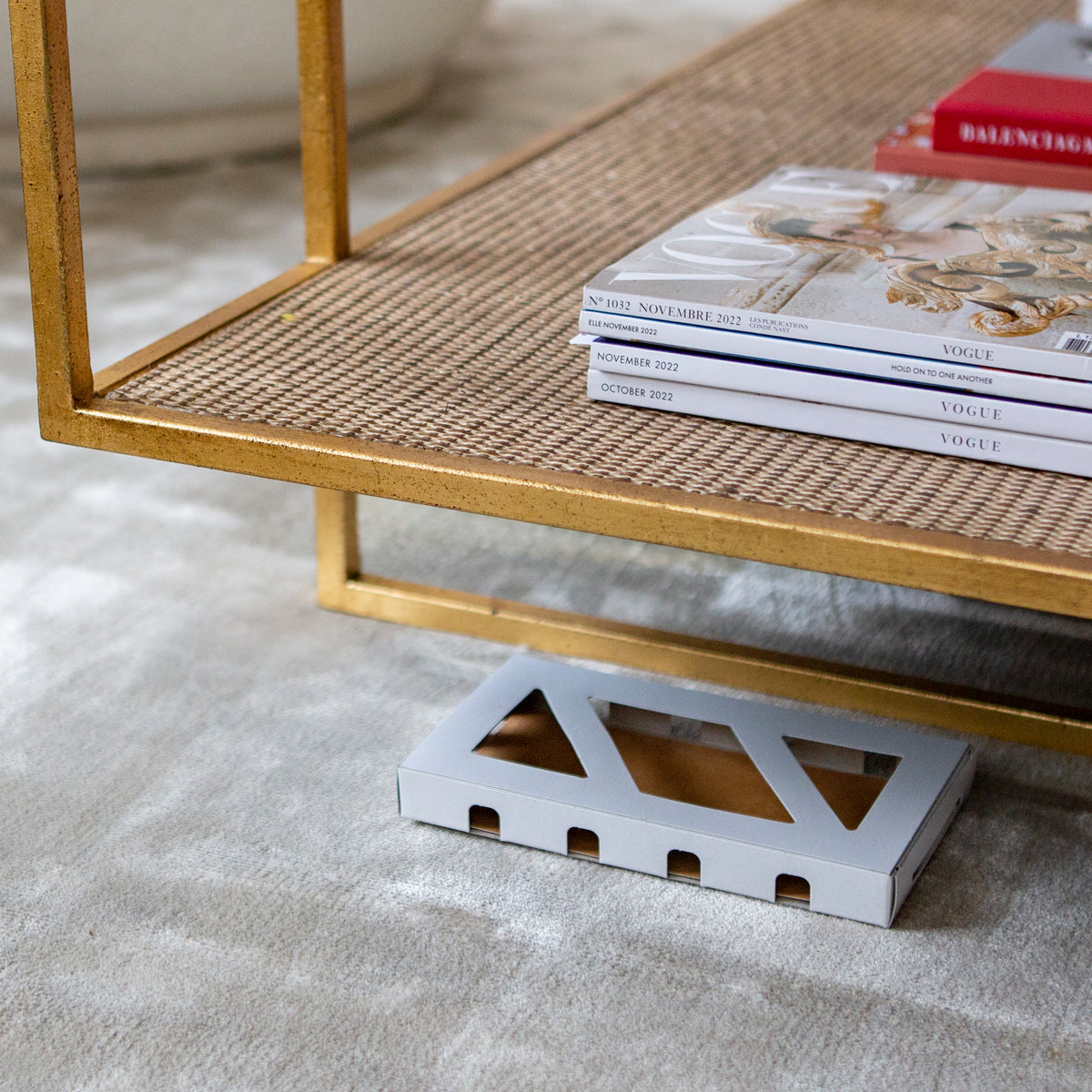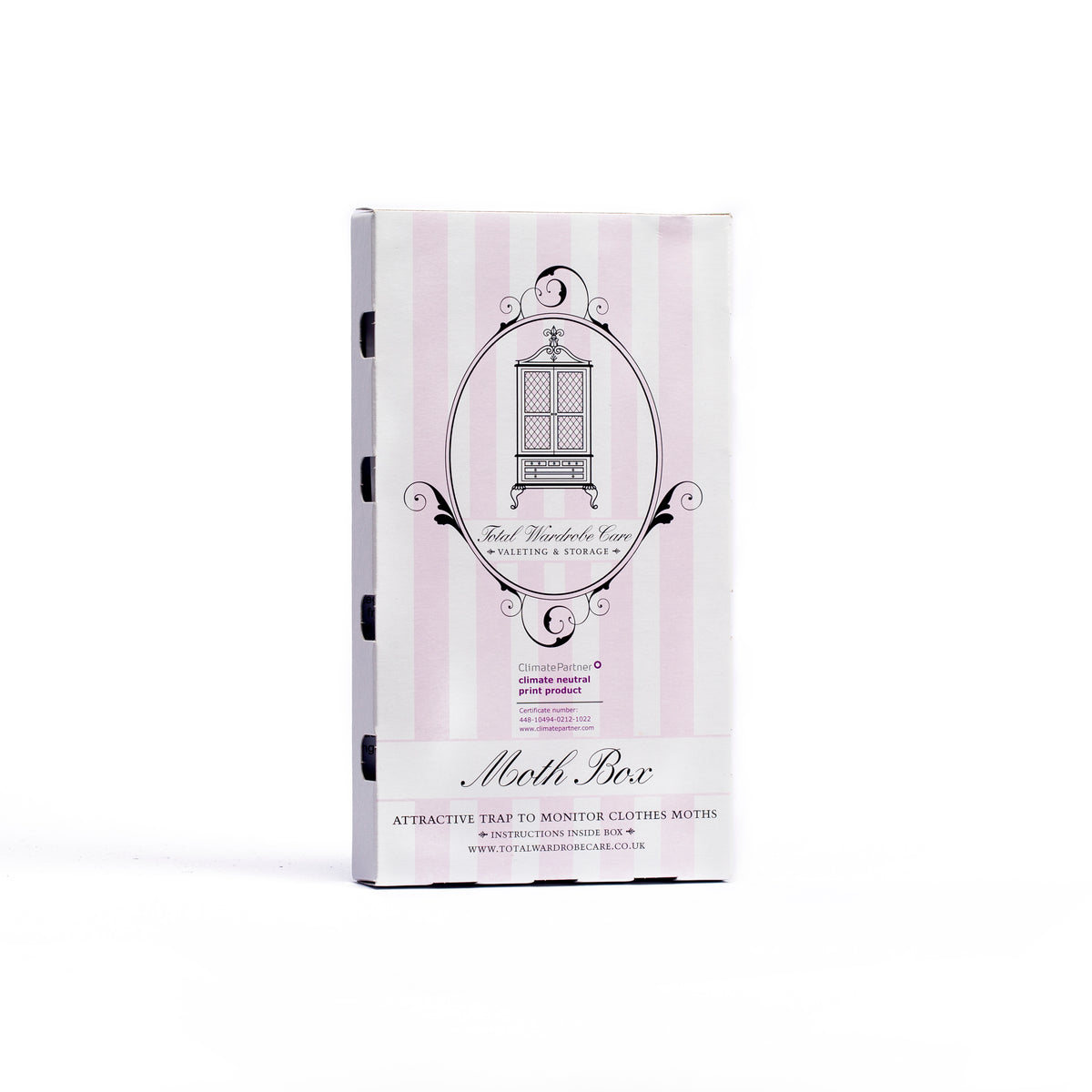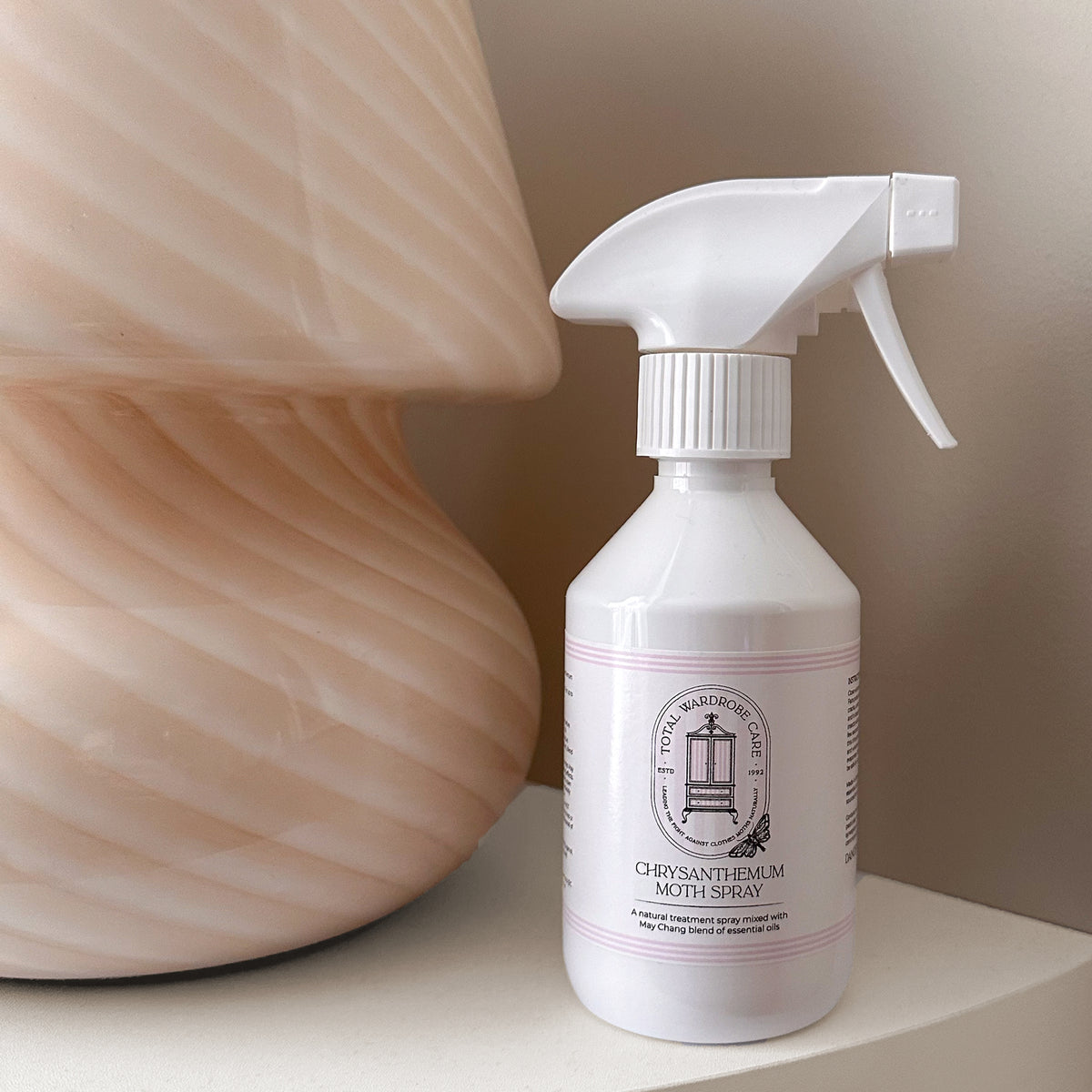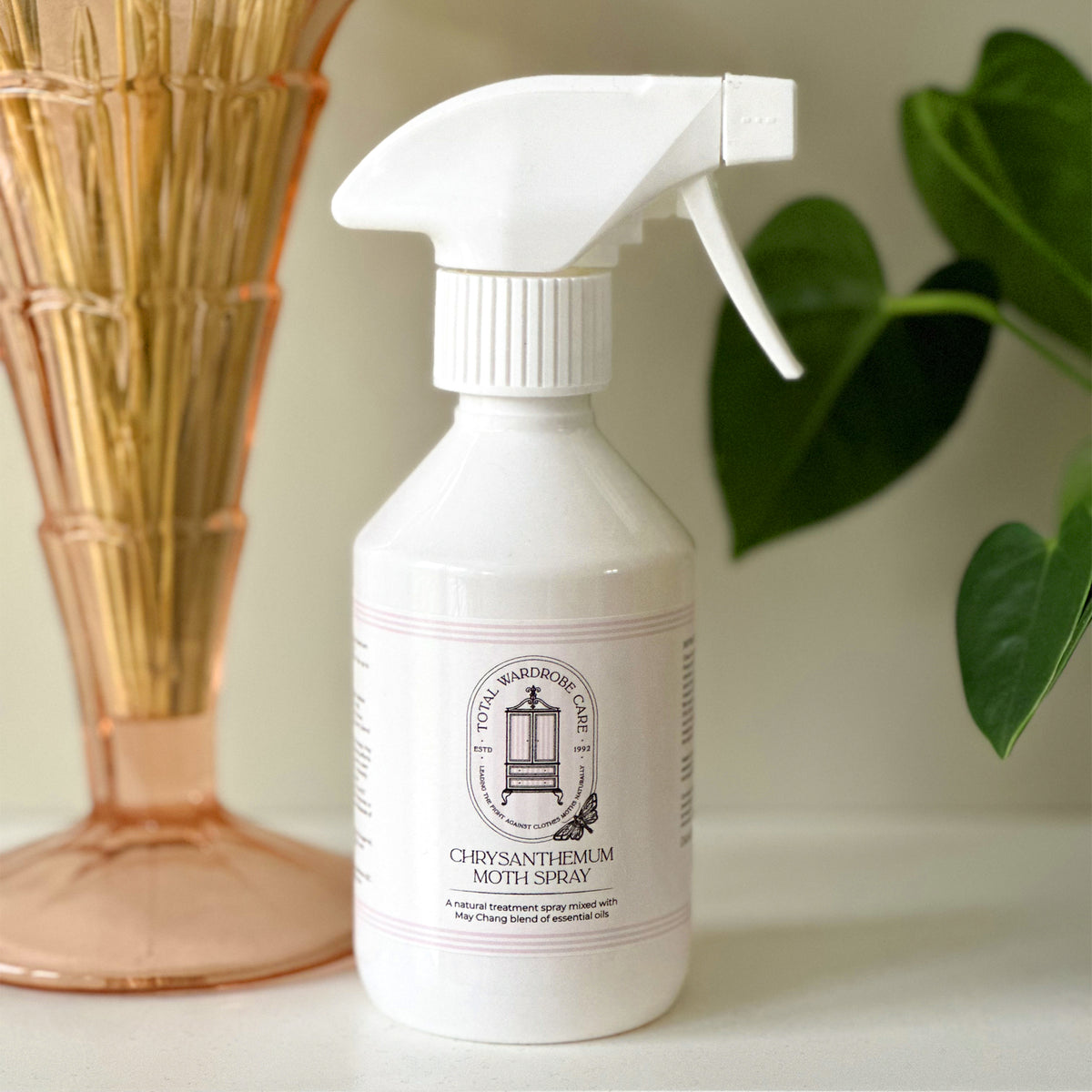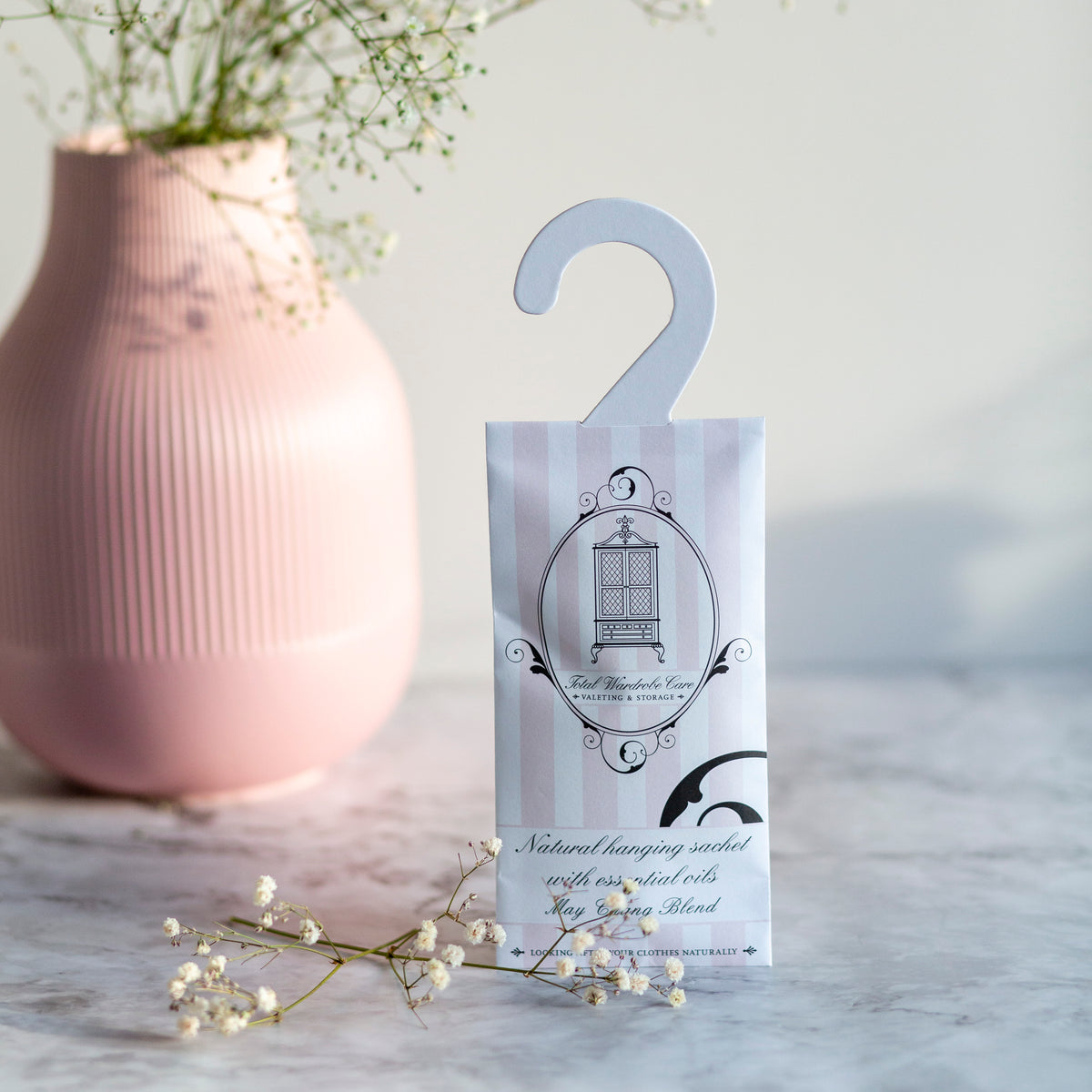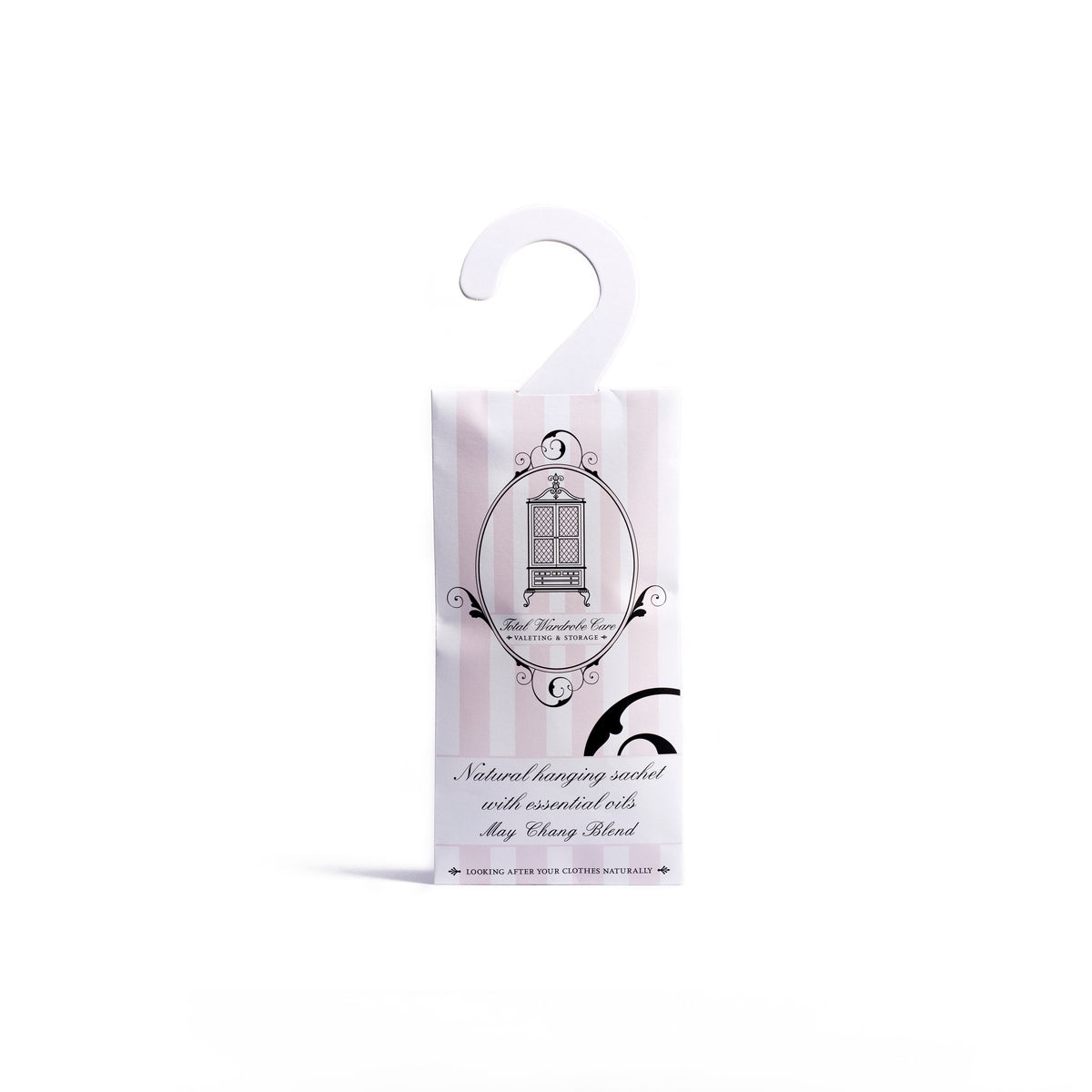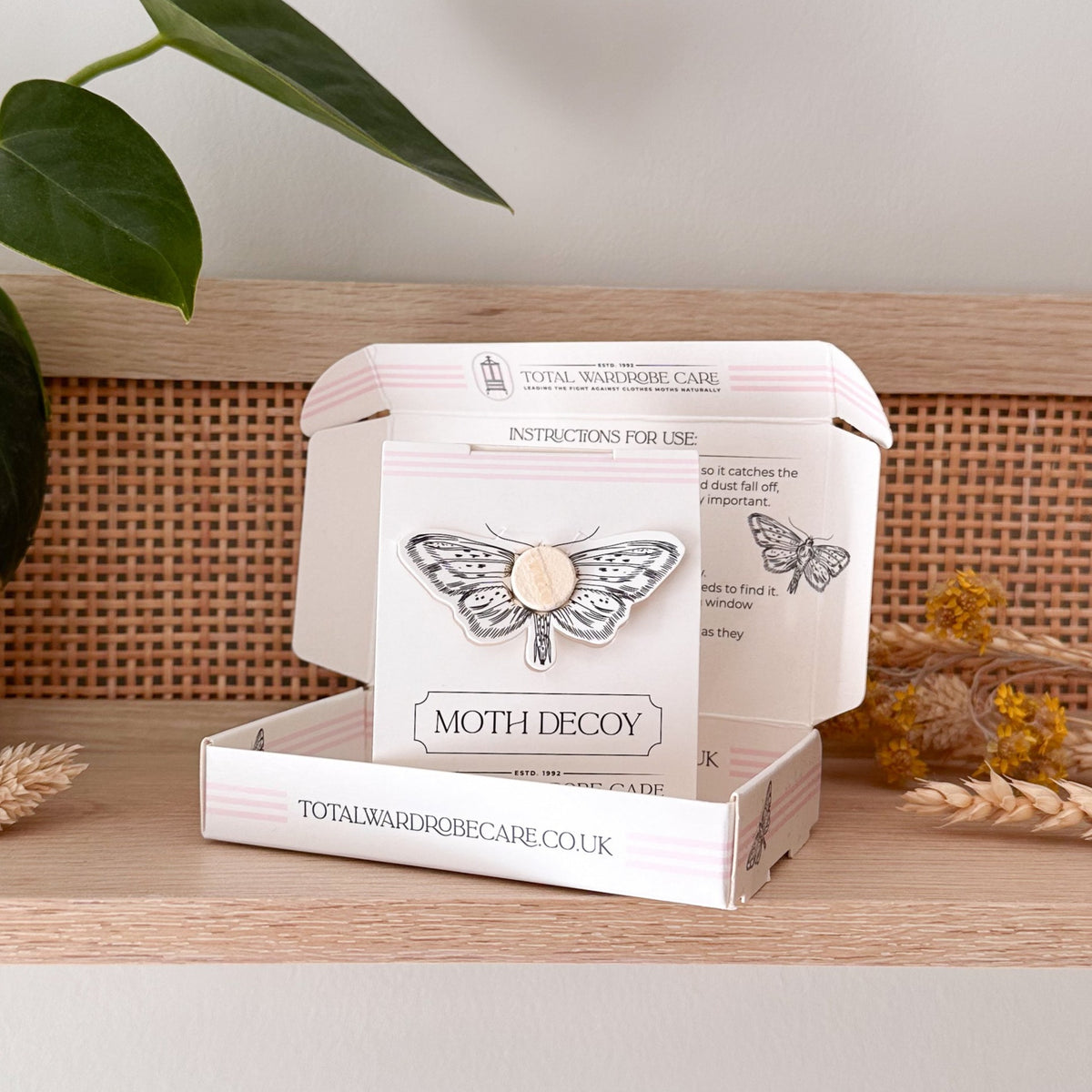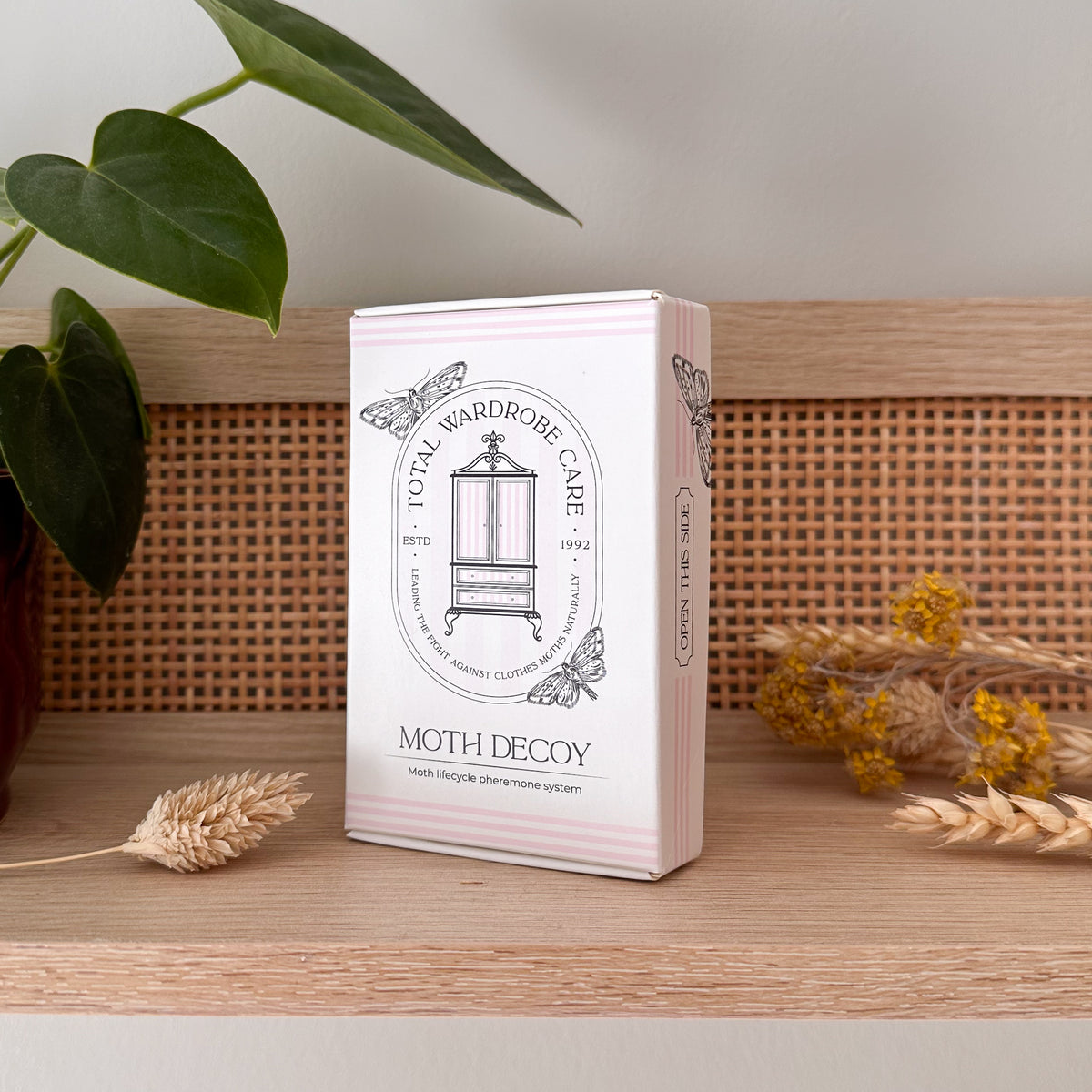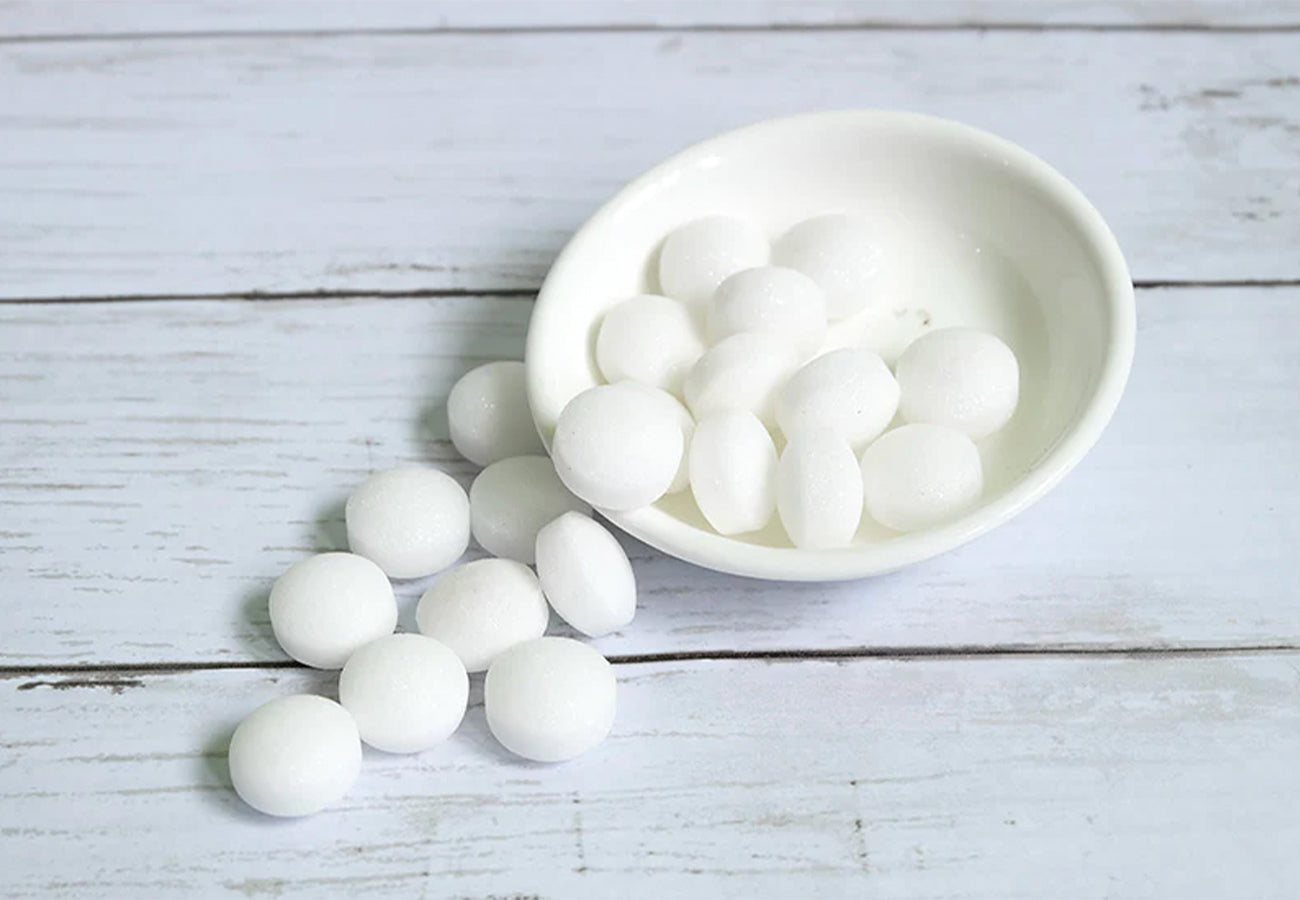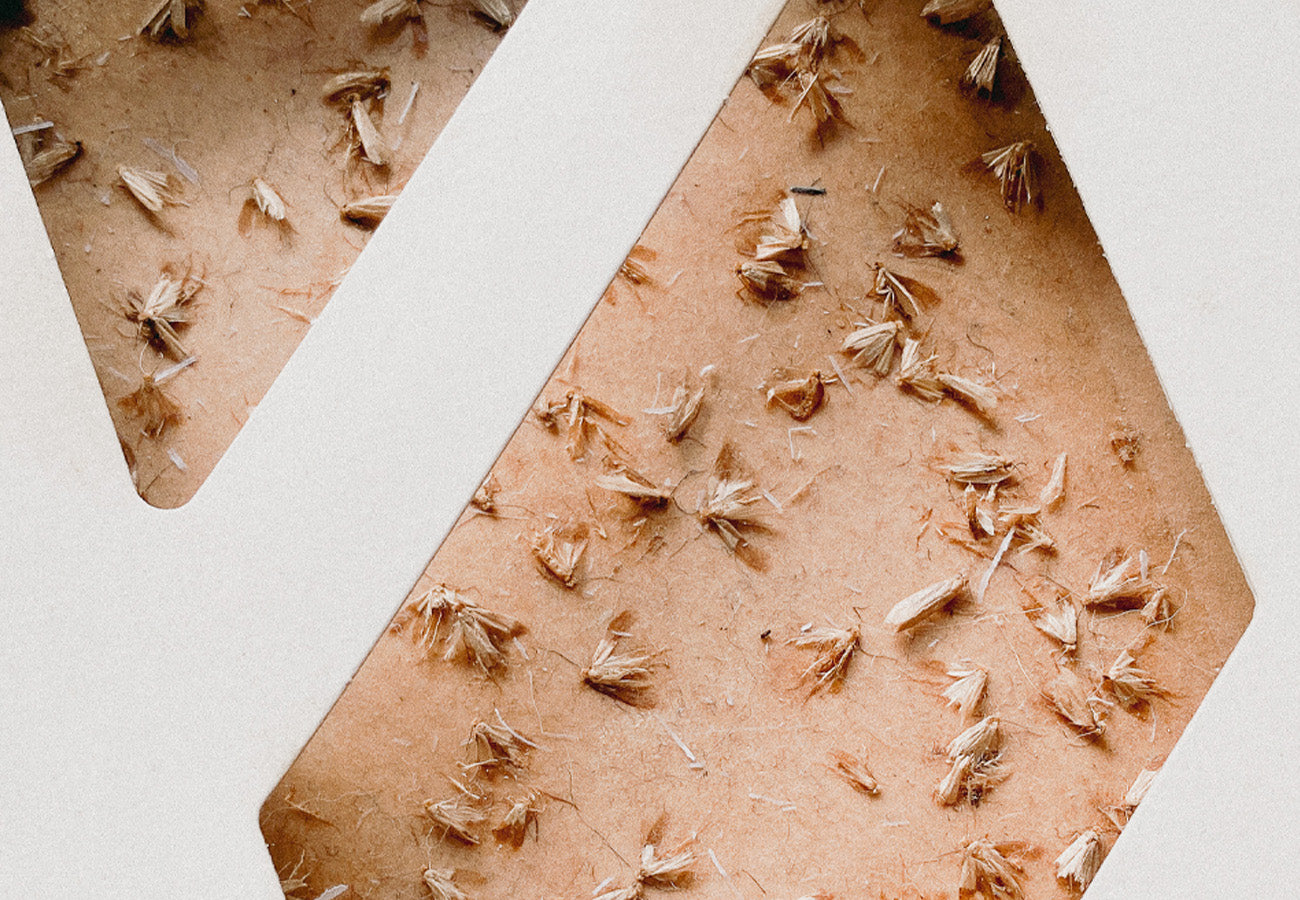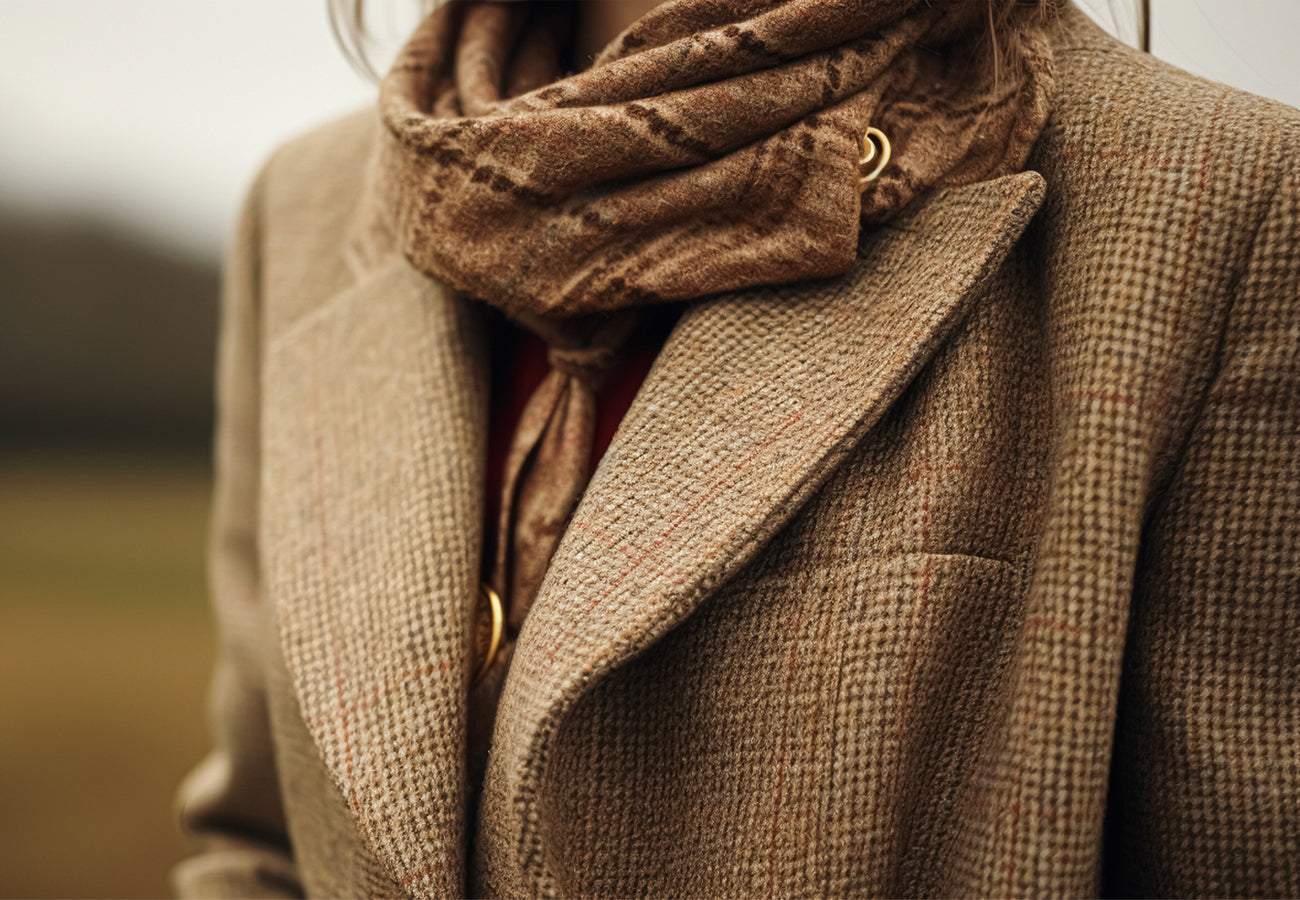We’ve noticed an increasing number of enquiries recently about carpet moths. A quick web search for ‘carpet moth’ can lead to slightly confusing information. Are Carpet moths and clothes moths the same thing or are there different species at work here? So let me help clear things up and offer advice on how to protect your carpets from the range of moths that may be feasting on them.
ARE CLOTHES MOTHS & CARPET MOTHS THE SAME?
No they are not! There are 4 species of moth which you could find in your home feeding on natural fibres including wool in carpets.
Firstly, there are 2 types of clothes moth; The Common or Webbing Clothes Moth (Tineola Bisselliella) is, as the name suggests, the most common. The adult moth is 5-8 mm long, a light buff silvery colour and is easy to miss especially if you have light coloured walls and soft furnishings. The larvae create webbing and feed on natural fibres creating holes in clothes, soft furnishings, carpets and rugs.
The Case Making Clothes Moth (Tinea Pellionella) is less prevalent. It is a similar size and overall colour to the common clothes moth but varies slightly in that the adult moth has 1 to 3 small spots on the wing and a little tuft of brown hair on the top of the head and its larvae are found with a silken case which they crawl around with.
The Carpet or Tapestry Moth (Trichophaga Tapetzella) is quite rare in Britain but that doesn’t mean it isn’t about. The adult has a white head and the forewing is a half dark brown grey colour near to the body and creamy white near the tip. It’s larvae create webbing more like the common clothes moth.
The Pale Backed Clothes Moth (Monopis Crocicapitella) has been identified in a recent survey carried out by English Heritage. Pheromone monitoring traps which are designed to catch and monitor the number of common clothes moth also caught a surprising number of this moth pest too. The English Heritage Website has a great photo showing the difference between the light coloured Common Clothes Moth and the much darker Pale Backed Clothes Moth.
WHAT DO CLOTHES MOTHS & CARPET MOTHS HAVE IN COMMON?
All of the above species have some key things in common. They feed on keratin, the protein found in natural fibres like skin, fur and wool. The larvae of each species, cause the damage to carpets and natural fabrics. The adult moths emerge around the spring time as temperatures rise. They mate and lays the eggs of the next generation through until Autumn. With centrally heated homes, this lifecycle can continue throughout the year.HOW DO I GET RID OF CARPET MOTHS IN 4 STEPS?
Regardless of the species of moth eating your carpets, there are simple steps you can take to get rid of them. If you have noticed damaged carpets, thoroughly check all the carpets in your house. Even carpets with a combination of natural and synthetic fibres are at risk.
-
Vacuum the carpets thoroughly to remove dust, debris and eggs ensuring you vacuum underneath furniture which, I’m afraid, may mean moving heavy furniture. If damage is extensive, it may be worth throwing the carpet away.
- Once you have vacuumed, treat the carpet with our 100% natural Chrysanthemum Moth Killer Spray. The spray consists of pyrethrum, a natural insecticide extracted from chrysanthemum flowers, and our signature blend of anti-moth essential oils. The Chrysanthemum Spray will kill all adult moths, larvae and eggs on contact.
- The moth armoury. Once your carpet as clean as can be it’s time to protect all your hard work. The Moth Decoy works as part of an integrated moth control programme. Moth Boxes provide a useful indicator moth activity over time. As the system works with the The Life of a Clothes Moth, within 9-12 months you should notice a reduction in the moth population.
- Relax. Put your feet up and marvel at all your hard work.
HOW TO USE THE CHRYSANTHEMUM MOTH SPRAY
- To treat a room, set aside a day. After you have thoroughly vacuumed, take the Chrysanthemum Spray (a 250ml bottle will be enough to treat 2 small/medium sized rooms).
- Wear a mask because the formula, though natural, is potent.
- Close the windows and curtains and start at the furthest corner of the room to the door. Spray the carpet paying particular attention to the damaged area, the edges of the room and underneath furniture.
- Just remember that moths are less likely to cause damage in high traffic areas and much more likely to munch away in quiet, dark spots away from disturbance. Close the door and leave for 4 hours.
- Then open the curtains, door and windows and leave the room to air for another 4 hours before reoccupying. Pyrethrum is highly photosensitive therefore the light will break it down so that all that is left behind is the gorgeous scent of our May Chang Essential Oil Blend.
For more information about the Chrysanthemum Spray, you may find the blog ‘The Killer Moth Spray That You Need’ useful.

WHAT IF I HAVE CLOTHES MOTHS?
The common clothes moth is the most prevalent of these species so it is highly likely to be your culprit. To know for sure, place a pheromone Moth Box in the rooms that have damaged carpets. Place them under furniture where is it dark with little disturbance. Inside the Moth Box, a board coated in pheromone infused glue attracts the male clothes moth. If you find the common clothes moth, you should thoroughly check your wardrobes and other soft furnishings for damage. As well as the Chrysanthemum Moth Spray, you will also be able to use the Moth Decoy as part of your moth eradication programme. Find out more details on the Moth Decoy.NEED HELP?
For further information and advice on protecting your clothes and soft furnishings from destructive moths, have a look through our extensive blogs or Contact Us.


